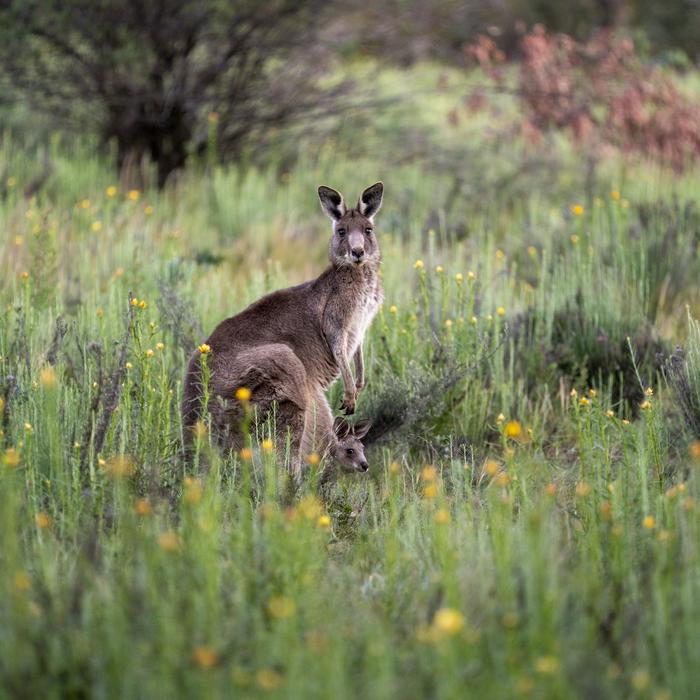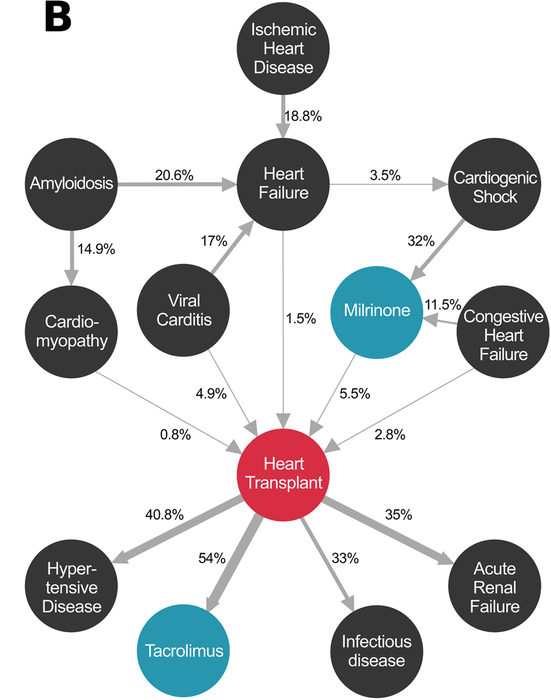Ask anyone what first springs to mind when they think of Australia and they’ll most likely say a kangaroo; the marsupial is ingrained in our national identity. But have you ever wondered why kangaroos never ventured beyond our shores?

Credit: Credit: Jamie Kidston/ANU
Ask anyone what first springs to mind when they think of Australia and they’ll most likely say a kangaroo; the marsupial is ingrained in our national identity. But have you ever wondered why kangaroos never ventured beyond our shores?
A major study led by biologists at The Australian National University (ANU) and ETH Zurich in Switzerland provides a new explanation for why you won’t find kangaroos, koalas and other Aussie marsupials in Indonesia, but you will find many groups of animals that originated in Asia, such as goannas, rodents and kookaburras in Australia.
Biologists have long described this asymmetrical distribution of Australian and Asian species using an imaginary line that separates Australia, New Guinea and parts of Indonesia from continental Southeast Asia. This invisible boundary is known as Wallace’s Line.
In a new paper published in Science, the researchers say changing plate tectonics and a dramatic shift in Earth’s climate tens of millions of years ago are the reasons for the uneven distribution of Australian and Asian creatures on both sides of the invisible boundary — finally providing an explanation for the enigma of Wallace’s Line, which has long baffled scientists.
The ANU researchers found species that originated in Asia could tolerate a wide variation in climactic conditions and were more successful at adapting to and settling in Australia, which explains why there is more Asian fauna found in Australia compared to the other way around.
“If you travel to Borneo, you won’t see any marsupial mammals, but if you go to the neighboring island of Sulawesi, you will. Australia, on the other hand, lacks mammals typical of Asia, such as bears, tigers or rhinos,” Dr Alex Skeels, from ANU, said.
According to Dr Skeels, this uneven distribution of animal species on both sides of Wallace’s Line is partly due to changes in ancient plate tectonics — dating back 45 million years — that ultimately led to a “continental collision” that altered the geographic composition of Earth.
“About 35 million years ago, Australia was located much further south and was connected to Antarctica,” he said.
“At some point in Earth’s timeline, Australia broke away from Antarctica and over millions of years drifted north, causing it to crash into Asia. That collision gave birth to the volcanic islands that we now know as Indonesia.”
The islands of Indonesia served as “stepping stones” for animals and plants that originated in Asia to reach New Guinea and northern Australia, and vice versa.
“Our research shows far more groups of Asian fauna crossed over and established themselves in Australia than in the opposite direction,” Dr Skeels said.
But as ANU researchers explain, a shift in plate tectonics is just one piece of the puzzle in explaining the migration of Asian species to Australia. When Australia broke away from Antarctica, there was a climactic shift that led to a trend of global cooling and drying of the continents, which led to mass extinction events around the world.
“When Australia drifted away from Antarctica, it opened up this area of Deep Ocean surrounding Antarctica which is now where the Antarctic Circumpolar Current is. This dramatically changed Earth’s climate as a whole; it made the climate much cooler,” Dr Skeels said.
“Despite this global cooling, the climate on the Indonesian islands, which organisms used as a gateway to hop to Australia, remained relatively warm, wet and tropical. So Asian fauna were already well adapted and comfortable with these conditions, so that helped them settle in Australia.
“This was not the case for the Australian species. They had evolved in a cooler and increasingly drier climate over time and were therefore less successful in gaining a foothold on the tropical islands compared to the creatures migrating from Asia.”
The researchers analysed a dataset of about 20,000 birds, mammals, reptiles and amphibians to determine which species hopped between Indonesia and Australia, and which ones were able to successfully adapt to their new home.
“Our findings could also inform predictions for animal migration in the future and help us predict which species may be better versed at adapting to new environments, as changes to Earth’s climate continues to impact global biodiversity patterns,” Dr Skeels said.
Journal
Science
DOI
10.1126/science.adf7122
Method of Research
Computational simulation/modeling
Subject of Research
Animals
Article Title
Paleoenvironments shaped the exchange of terrestrial vertebrates across Wallace’s Line
Article Publication Date
6-Jul-2023





